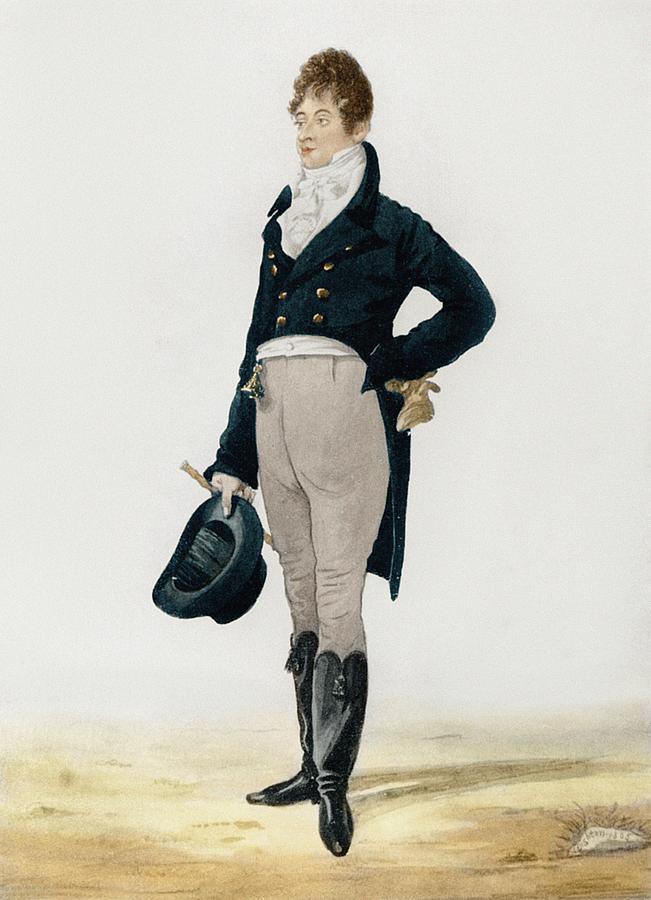Try reading these two threads:
http://thelondonlounge.net/gl/forum/vie ... 18547f90fb
http://www.thefedoralounge.com/showthread.php?t=7058
The coat you refer to is a type of "pink coat". If you look at the fox in the Thomas Pink logo - that's the colour coat he's wearing.

"Pink" was meant to make the hunter visible to other members of the hunting party. The only example of which I have a close up picture is of one dating from 1860-1880 and it has brass guilt buttons carrying the emblems of the pack.

As far as trousers go, it is my pet peeve that trousers with a dress coat
must have flat fronts. Pleats are a modern innovation and work better with the looser fitting lounge coat than with body coats. However, there are some 1930s fashion plates depicting single and double pleats with dress coats, so it is up to you in the end. I happen to strongly feel that a dress coat should be be cut very close to your figure, with maximal waist suppression (that's what the waist seam is for dammit!) - bordering on being a bit tight fitting. The trousers should follow that aesthetic of the coat - hence slimmer cut flat fronted trousers. This is after all how the dress coat was originally worn as evening dress around the Georgian era:
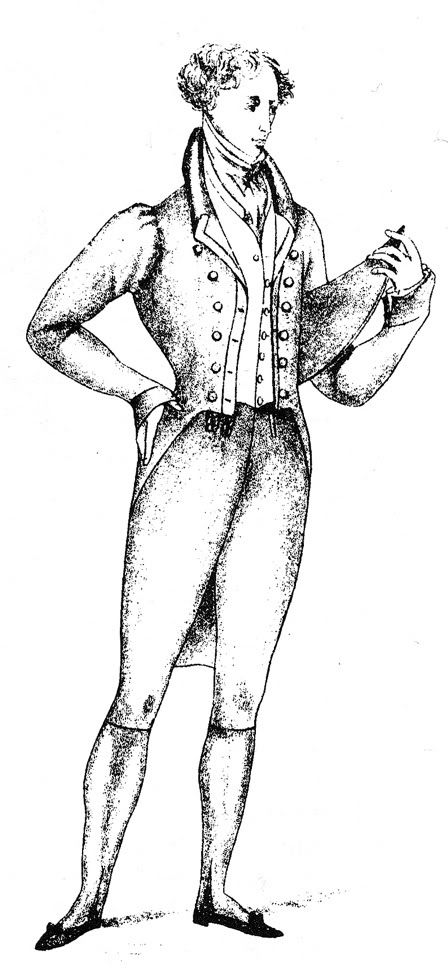
Even in the Edwardian era the silhouette of the dress coat was very sleek:

My tailor says, and quite rightly so IMHO, that a dress suit should lean towards being "tight fitting".
As for lapels, please note that in British English the correct term is "double breasted styled lapels". "Peak lapels" is an Americanism. Another option you may like to consider would be a shawl collar:
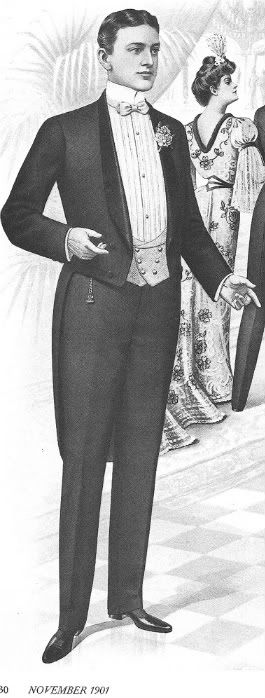
A pink coat would not usually take grosgrain facings as you describe. That is mostly only seen on a dress coat proper. You won't really find any red grosgrain anyway - at least I have never seen it in any books. That said I have found this historical example from Huntsman of Savile Row:
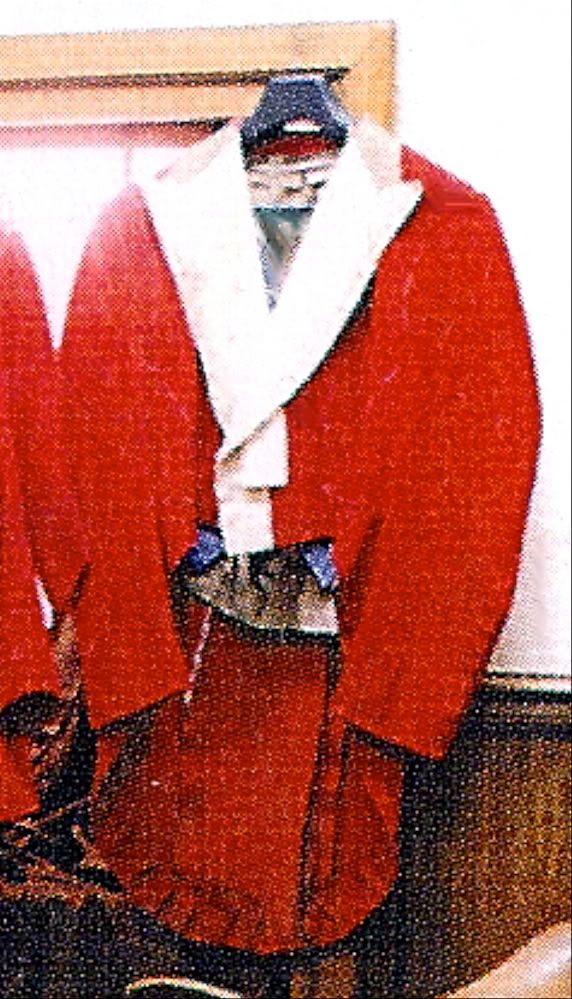
The construction of the front of this coat suggests that it was made before the 1920s. At that time the lapels were cut separately and stitched on later to the body of the coat. The part of the lapels cut separately on this above coat appear to be made of a white silk (there is a white grosgrain in the Holland & Sherry formal book).
Here is a pattern for a dress coat with the lapels cut separately:

Here is a close up of a body coat made with separately cut lapels:

If you lift up up the lapel you can see the seam running underneath it:

The difficulty is that tailors familiar with body coats are becoming fewer. And those who have made a body coat with lapels cut separately will be vanishingly few and most will never have done it in their lifetime. The only good news is that the example from Huntsman may be on display in their store. You may be able to go in and say "make me one of those". The bad news is that the extra difficulty and time that it involves to make such a coat is going to cost you dearly. Expect to pay 2.5-3x more than what it costs for a lounge coat.
Lastly, a word on footwear. The only footwear appropriate for evening full dress are court shoes, which are called that because they were historically worn as court dress, especially so in British English. They are also sometimes called opera pumps. However, they pre-date the birth of opera in the 17th century making them the oldest item in a man's wardrobe.
If you are going "all the way" with the "dress hunt coat" (as opposed to the more practical pink coat called the "field coat") I would certainly hope you will not skimp on this detail. I would strongly recommend going to Edward Green, who make a beautiful court shoe. I have pair on order myself with them and am expecting delivery imminently. Naturally, an even better option if you are going to make a trip to Savile Row is to drop in a bespoke shoemaker's store such as Cleverley or Gaziano & Girling etc to have a bespoke pair made for you.
Just one more pet peeve. A dress coat, or any coat of knee length should under no circumstance be referred to as a jacket

. The term
jacket is reserved for a coat which is short.
I think that the expression "dinner jacket" refers to the fact that there was time when you wore a "dinner coat" it meant that you wore a dress coat, as that was the standard form of dinner dress. So "dinner jacket" is a way of emphatically saying "yes, I am wearing a coat for dinner, though a short one, rather than a proper dress coat". After all dinner jackets are still coats.
Next, I have never heard the term "ballet pumps" and as far as I know they were never intended for a ballet dancer. What is true is that throughout the Renaissance part of a gentleman's education involved the learning of proper refined court dances. As a consequence court shoes are also known as "dancing shoes".
Here is a painting of Elizabeth I dancing the volte with Robert Dudley:
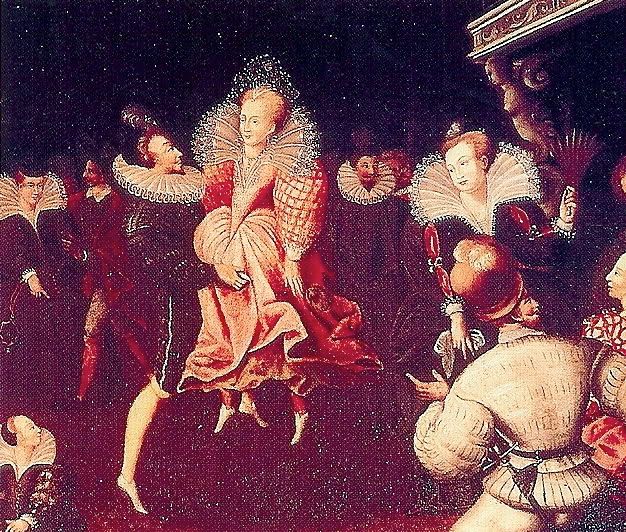
Naturally, Dudley is wearing court shoes.










